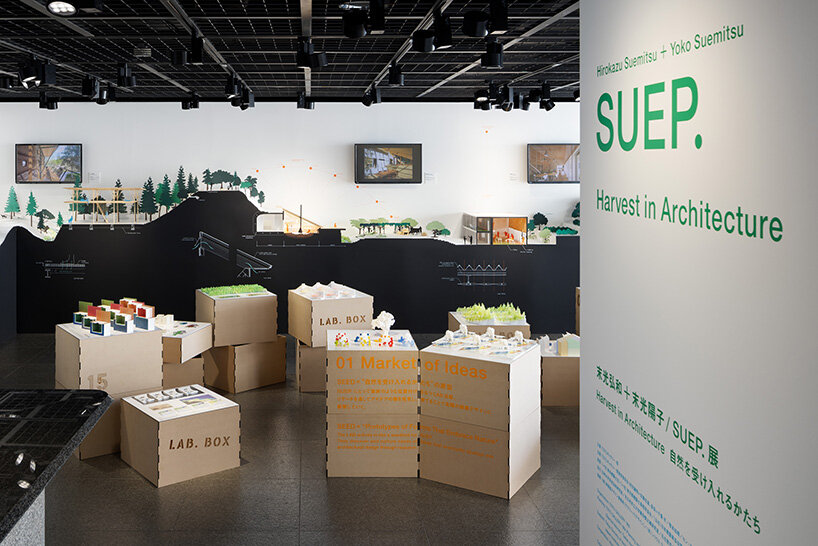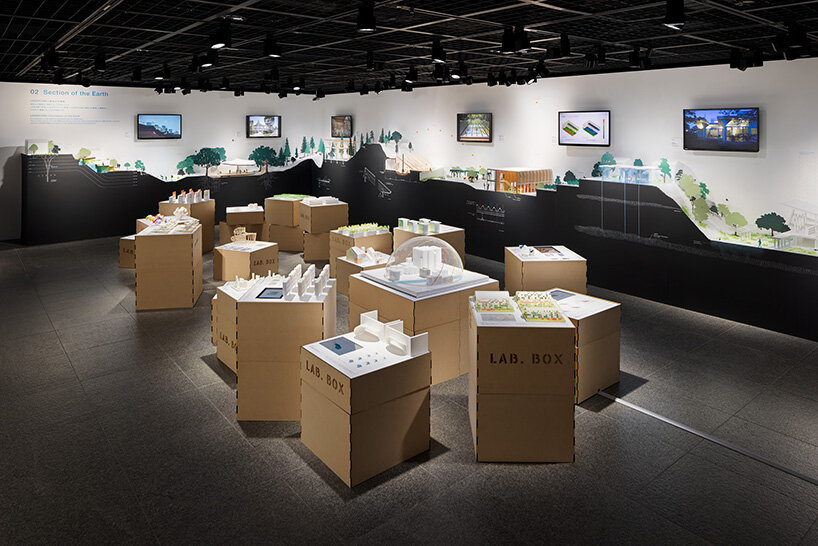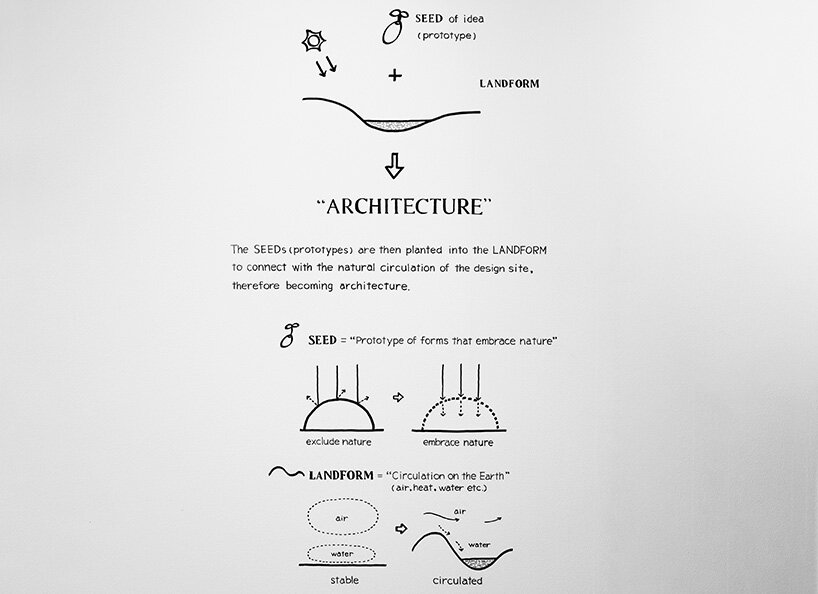harvest in architecture: interview with SUEP. on their exhibition at TOTO GALLERY·MA
‘Harvest in Architecture’ by SUEP. at toto gallery·ma
Until September 11, 2022, TOTO GALLERY·MA presents the exhibition ‘Harvest in Architecture’ by SUEP., the architectural practice established by Hirokazu Suemitsu and Yoko Suemitsu in 2003. What distinguishes SUEP. is the way they view architecture as an instrument for activating ecological processes, always focusing on a ‘symbiosis with nature’. Their projects are informed by natural features such as topography, groundwater systems, vegetation, and ecosystems and the study of wind, heat, and water with simulations.
Their exhibition at the Tokyo gallery features the studio’s research and investigations, while shedding light on how they have been connecting their findings to their circular building designs. ‘In this exhibition, we set out to question how tomorrow’s architecture could be shaped to exist as part of the environment and its cycles in order so that we can sustainably enjoy the blessings of nature,’ SUEP. notes. designboom spoke with Hirokazu Suemitsu and Yoko Suemitsu to find our more about ‘Harvest in Architecture’, as well as the studio’s creative process and ongoing projects. Read our interview in full below.

all images © Nacása & Partners Inc. unless stated otherwise
INTERVIEW WITH Hirokazu Suemitsu and Yoko Suemitsu OF SUEP.
designboom (DB): What is the main focus of your exhibition at TOTO GALLERY·MA?
SUEP.: The focus is on the question, ‘what kind of architecture should we architects think about in the future as the climate change problem becomes more serious?’. Our answer at this exhibition is ‘architecture that is part of the natural cycle’.
DB: Where does the exhibition’s title, ‘Harvest in Architecture’, come from?
SUEP.: Architecture that considers the global environment does not mean that we live in a closed environment from nature. I think we should open up naturally and live while feeling the blessings of heat and wind. The word ‘harvest’ for the exhibition has images that express color/diversity, happiness/joy, energy/vitality. it has a message that, like agriculture, we should value the abundance of harvesting grace while continuously cultivating the relationship with nature on the spot.
DB: Nowadays, sustainability has become a trend we tend to see everywhere. What does sustainability and circularity really mean to you?
SUEP.: Sustainability is the balance between nature and humans. The balance is not constant, it varies from place to place, and we believe that it exists in various forms as dynamic equilibrium. Circulation is the movement of energy and matter that occurs in that balance. It happens in an open system order that traverses various scales. The global environment is made up of a chain of open circulations, from macro-scale to micro-scale, and I think that architecture will be a part of that natural circulation, and we will be able to obtain sustainable affluence.
DB: Can you share some of the techniques you are employing to achieve a truly sustainable result?
SUEP.: Our architecture is born from seed (a prototype that accepts nature) and landform (energy circulation on the Earth such as wind and heat generated by terrain). By connecting seed to landform, the building will be part of the natural circulation. By carefully investigating the potential of the place and connecting the seeds of open architecture to the circulation of the land, we believe that we can sustainably obtain the blessings of nature.

the seed and landform concept
DB: What do hope visitors will take away from the exhibition?
SUEP.: The architectural design that happens around us is part of a story on Earth, in which there are various characters such as people, trees, birds, and winds. I want to bring back the feeling that thinking about the story (relationship between characters) is the design of the balance between people and nature, and leads to true sustainability.


